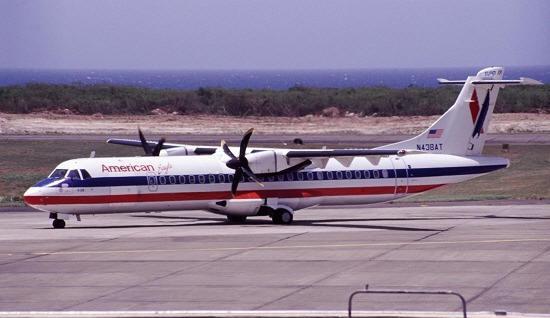
 |
OCT-31-94, The airplane was in a holding pattern and was descending to a newly assigned altitude of 8,000 feet when it experienced an uncommanded roll excursion and crashed during a rapid descent. The loss of control was attributed to a sudden and unexpected aileron hinge moment reversal that occurred after a ridge of ice accreted beyond the deice boots. The manufacturer failed to disseminate adequate warnings and guidance to operators about the adverse characteristics of, and techniques to recover from, ice-induced aileron hinge moment reversal events; and failed to develop additional airplane modifications, which led directly to this accident. The DGAC failed to require the manufacturer to take additional corrective actions, such as performing additional icing tests, issuing more specific warnings regarding the aileron hinge moment reversal phenomenon, developing additional airplane modifications, and providing specific guidance on the recovery from a hinge moment reversal, which led directly to this accident. |
The ability of the FAA to to monitor, on a real-time basis, the continued airworthiness of the ATR airplanes was hampered by the inadequately defined lines of communication, the inadequate means for the FAA to retrieve pertinent information, and the DGAC's failure to provide the FAA with critical airworthiness information., because of the DGAC's apparent belief that the information was not required to be provided under the terms of the Bilateral Airworthiness Agreement.
Probable Cause: the loss of control, attributed to a sudden and unexpected aileron hinge moment reversal that occurred after a ridge of ice accreted beyond the deice boots because: 1) ATR failed to completely disclose to operators, and incorporate in the ATR 72 airplane flight manual, flightcrew operating manual and flightcrew training programs, adequate information concerning previously known effects of freezing precipitation on the stability and control characteristics, autopilot and related operational procedures when the ATR 72 was operated in such conditions; 2) the French Directorate General for Civil Aviation's (DGAC's) inadequate oversight of the ATR 42 and 72, and its failure to take the necessary corrective action to ensure continued airworthiness in icing conditions; and 3) the DGAC's failure to provide the FAA with timely airworthiness information developed from previous ATR incidents and accidents in icing conditions, as specified under the Bilateral Airworthiness Agreement and Annex 8 of the International Civil Aviation Organization.
Contributing to the accident were: 1) the Federal Aviation Administration's (FAA's) failure to ensure that aircraft icing certification requirements, operational requirements for flight into icing conditions, and FAA published aircraft icing information adequately accounted for the hazards that can result from flight in freezing rain and other icing conditions not specified in 14 Code of Federal Regulations (CFR) Part 25, Appendix C; and 2) the FAA's inadequate oversight of the ATR 42 and 72 to ensure continued airworthiness in icing conditions. (Listen To The Last Few Moments Of The Crash). You can also ( read the Transcript).